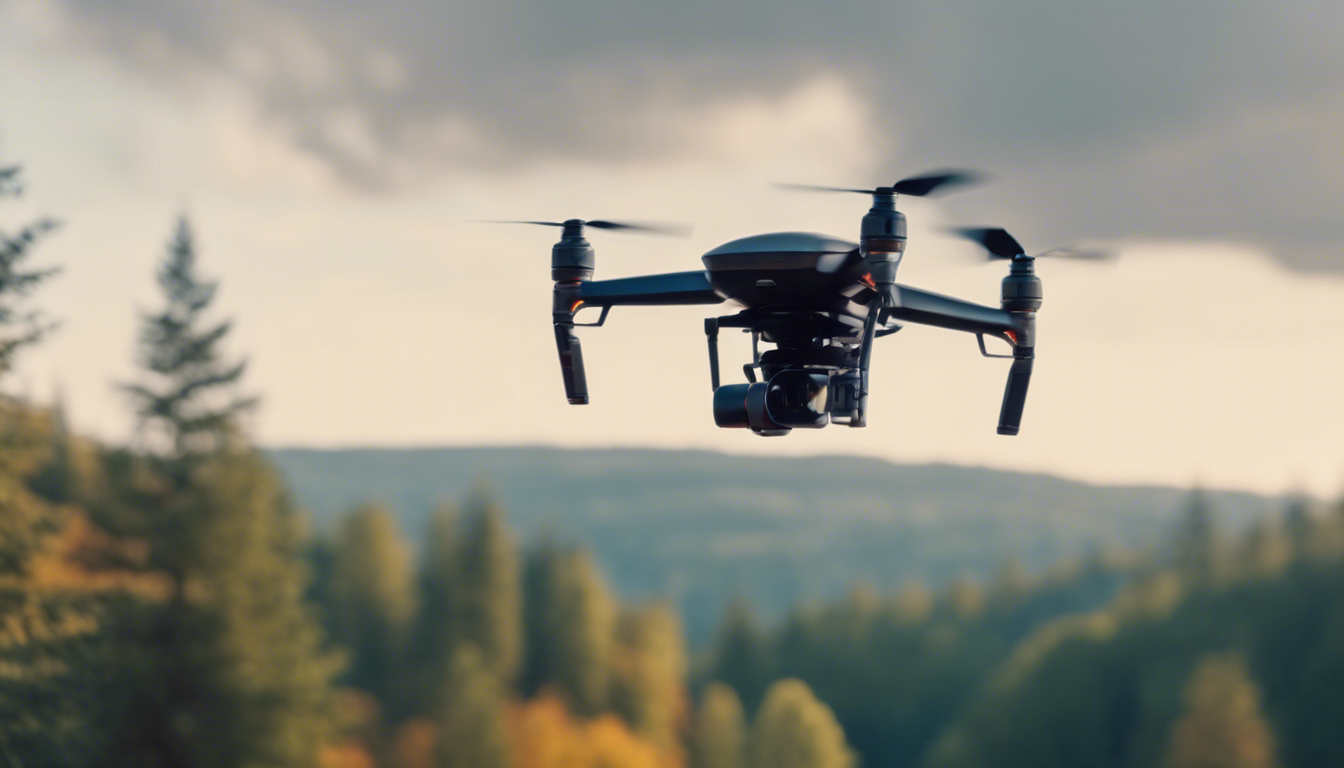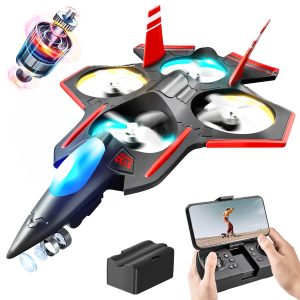
Design Innovations to Minimize Drone Acoustic Footprint
Picture a typical drone. Most likely, a rather noisy little machine comes to mind, doesn’t it? Well, there’s an entire science dedicated to making drones less of a buzzing nuisance and more of a whispering presence in the skies. The quest for silence, or at least for a lower acoustic footprint, is leading to some truly creative design tweaks that are changing this drone landscape — quite literally.
For starters, one of the culprits behind drone noise is the propellers. They cut through the air with a relentless determination that inevitably generates sound. But engineers have taken a leaf out of Mother Nature’s book, taking inspiration from owls. It’s no secret that these birds are the ninjas of the night sky, flying silently to swoop on unsuspecting prey. Designers have emulated the wing structure of owls, incorporating serrated edges on drone propellers. This subtle change can remarkably reduce the noisy chop-chop we’ve come to associate with drones.
Companies are also playing around with propeller size and shape. It turns out that larger, but slower-spinning blades can push just as much air as smaller, faster ones, with a significantly reduced racket. Who would’ve thought that bigger could be quieter, right? Meanwhile, shrouding those blades in a duct has benefits too. Not only does it add a safety buffer—no more worries about accidental propeller finger snips—but it also helps channel the airflow more smoothly, hence lessening that high-pitched whine.
Now, the body of this drone isn’t neglected in this silent revolution. Materials play a huge role in sound dampening. Imagine a stealthy drone made from materials that absorb vibrations and thus, stifle sound? Well, it’s not science fiction—it’s the current focus of drone researchers. By using composites that include sound dampening characteristics, these aerial machines can become less intrusive. That’s critical not only for urban areas where noise pollution is a real concern but also for wildlife – preventing disturbance to animals is a loud plus!
Lastly, let’s talk about the internals—the motors. It’s no surprise that the drone’s heart is also a significant noise contributor. By tweaking motor designs to operate at frequencies outside of the most sensitive range of human hearing, engineers are turning what was once a drone’s roar into something closer to a gentle hum. Progress in electric motor technology and precision manufacturing plays a pivotal role, ensuring that the drones of tomorrow might be heard only if one is actively listening for them.
To sum it up, consider of these drones as the sneaky cats of the sky. They are getting quieter, smoother, and more sophisticated, all thanks to a few smart design innovations aimed at toning down their acoustic footprint. It’s not just about being less annoying – it’s about blending into the soundscape in a respectful, almost unnoticeable manner. So, next time a drone does happen to catch your eye, you might just find that it’s the sight, not the sound, that grabs your attention.
Implementation of Flight Path Optimization
Imagine navigating the skies as a virtual game of aerial Tetris, where every move is calculated for efficiency and stealth – that’s flight path optimization for drones, a game-changer in drone technology. You see, it is not just about the drone’s design; it is how it cuts through the sky that can make all the difference. Flight path optimization is like giving drones an advanced GPS system this is not just about getting from A to B but doing so in the most inconspicuous and efficient way possible.
Now, what most don’t realize is that a drone’s buzzing through a busy cityscape is as complex as a ballet, just less tutus and more tech. With sophisticated algorithms, experts are developing ways for drones to understand the environment, avoid obstacles, and choose the path of least resistance and, you guessed it – least noise. Ponder of it as a stealth mode that would make James Bond proud. It’s about making drones streetwise in airways, teaching them to navigate around buildings, and to capitalize on natural wind patterns to slip through the air with minimal effort and, consequently, less noise.
What’s particularly clever is that these optimized paths think the time of day too. Flying a drone at a busy hour when the world is a hive of activity? The drone’s trajectory can adapt to fly higher or take a route that avoids people-packed places. But during quieter times, it can afford to go more direct without causing any ruckus. It’s all about making technology intuitively fit into the fabric of our daily lives without causing a stir.
Here’s a fun fact: some drones are getting smart enough to make decisions on the fly – pun intended. Machine learning is coming into play, so these flying whizz kids are learning from every flight, getting brighter about the best routes to take. Fancy a delivery drone that knows it is better to avoid the school route when the bells ring? That is what we’re talking about! It is all about being contextually aware and considerate of the soundscape.
And there’s more. Flight path optimization isn’t just about dodging noise complaints; it’s also about saving precious battery life. By choosing the most aerodynamic routes, drones can extend their flying time. That’s like choosing the highway over city roads for your car’s mileage – efficient and economical. So not only are we cutting down noise, but we’re also cutting down on the frequency of recharging pit stops our airborne friends need to make.
In a nutshell, the next generation of drones won’t just silently slip by – they’ll be masters at picking a path through the urban jungle this is best for everyone, from tech-savvy businesses to the little sparrow on the tree. We’re ushering in an era of drone travel that’s fast, quiet, and yes, downright cool. So, as these high-flying maestros take to the optimized paths less traveled, we might enjoy a future where we look up and wonder – did a drone just pass by or was it just a breeze?
Regulatory Measures and Community Engagement
The harmonious symphony of buzzing drones might soon become a background track to everyday life, and let’s be honest, not everyone’s keen on adding that to their playlist. That’s where the suits step in—regulatory measures, the rulebooks dictating how and where drones can zip around are popping up faster than you can say “drone permit.”
Governments worldwide are bringing out the measuring tapes and no-fly-zone maps to make sure drones and communities can coexist without ruffling each other’s feathers. Picture this: Just as cars have traffic lights and zebra crossings, drones are getting virtual highways in the sky. It’s about knowing your drone lanes, folks!
But here’s the kicker, regulations are not just about keeping drones out of trouble; they’re also about inviting them into the fold. By laying out clear rules, we’re essentially rolling out the welcome mat for drones to deliver your pizza or snap those stunning rooftop selfies— all within the bounds of safety and privacy.
Now, what’s an orchestra without an audience, right? Engaging with communities is the secret sauce to a drone-friendly society. It’s all about chats and chinwags, getting people looped into the conversation. Picture town hall meetings turned into drone zones, where folks can voice their thoughts on their new airborne neighbors.
Drones for good is the mantra, and it’s catching on. From firefighting scouts to flying defibrillators, drones are showing up in shining armor, ready to save the day. When people see drones whirring to put out a fire or track lost hikers, it’s easier to embrace them as part of the team, rather than pesky intruders.
But, my dear reader, it is not just about rules and town hall powwows. Technology is playing matchmaker here, with drone tracking systems that let you follow your flying friend from the comfort of your smartphone. It’s like having a leash on your dog, but for your drone, knowing it is not digging up the neighbor’s garden.
And education, that’s the ace up the sleeve. Teaching kids and drone enthusiasts alike about the dos and don’ts is making the skies friendlier. It is about piloting expectations as much as drones, promoting responsible flying that won’t turn heads for the wrong reasons.
So, in this grand ballet of regulators, communities, and drones, it is all coming together in a beautiful choreography of mutual respect and understanding. The future is gearing up to not just tolerate, but cheer for the hummingbirds of technology as they stitch the sky with stories of innovation and camaraderie.
